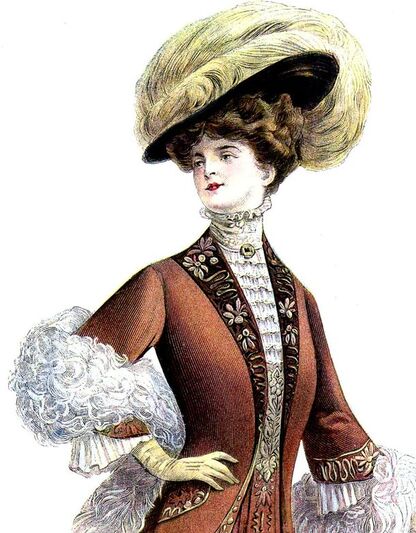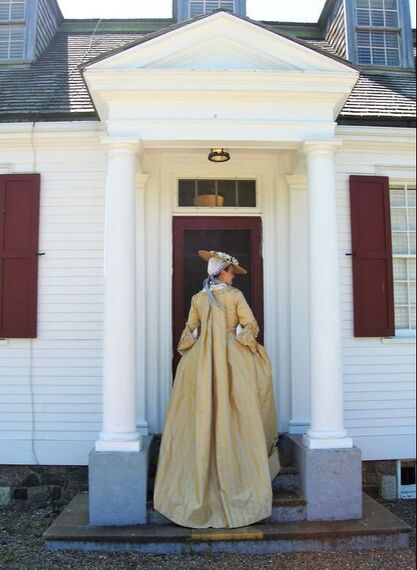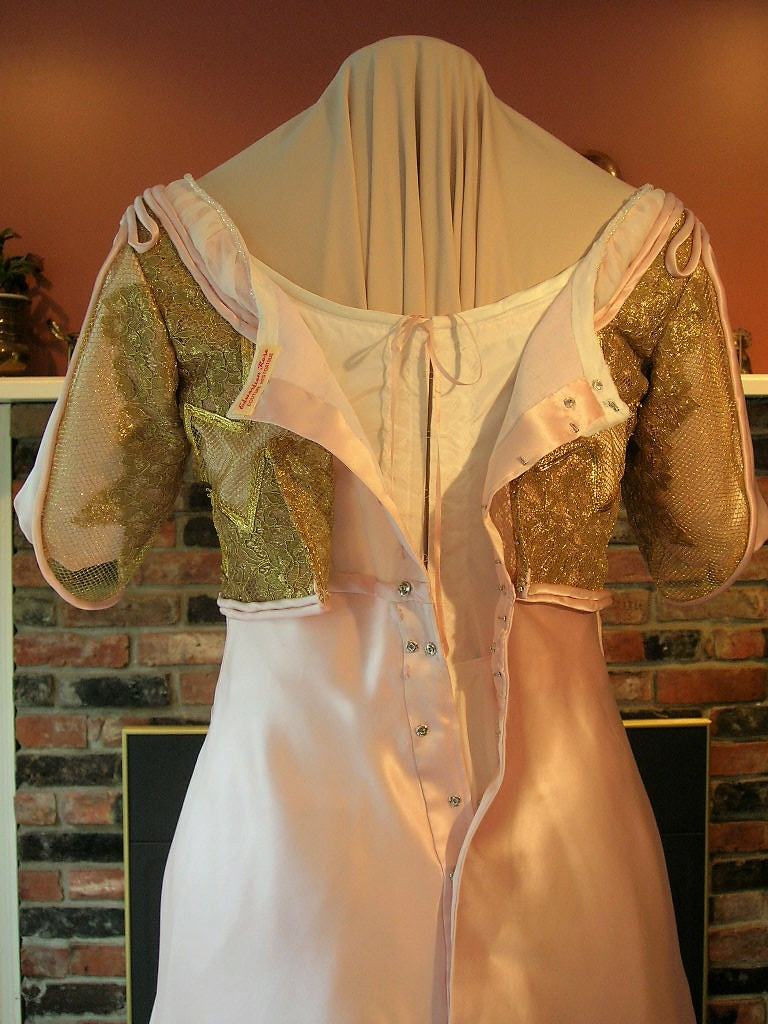- Empty Cart
|
If one element of women's fashion defined formal daytime elegance during the Edwardian era, it was the high, fitted, boned collar. Unlike their rigid, often plain, Victorian predecessors, the Edwardian boned collar was usually a thing of delicacy and charm, made of fine materials such as lace, chiffon, silk net, or lightweight linen, boned in narrow whalebone, featherbone, or (later) fine zig-zag wires. I've seen all these types in both museum examples and in pieces in my own collection of antique garments, although I have not seen steel bones of any kind used in Edwardian collars. Being able to construct one of these iconic period collars is a key part of creating an ensemble that reflects the time period accurately. I see many sewists struggling with this aspect of historical construction, and am hoping my insight and experience can help! (Please click on "Read More" at right, to see the full tutorial)
1 Comment
One question that comes up frequently in online historical costuming discussions is that of how much fabric would be needed to cut a particular type of gown, or else how best to make use of available yardage. This was certainly a serious question in the 18th century, when the high cost of materials (particularly silk) meant that an effort was made to use every possible scrap of fabric to best advantage in constructing a gown. This is revealed in the many ways in which garments -- particularly silk ones -- were cleverly pieced. In this article I'd like to focus on the problem of estimating yardage for a typical robe à la française (known in English as a "sacque" or "sack" gown. (Click on "Read More", lower right, to continue)
My motto in historical reproduction costuming has always been that "small things make a big impact", in other words it's the details that can really make a replica look -- at least from a reasonable distance -- as close as possible to an authentic antique garment. Finding the right style, colour, type, weight, and width of lace (especially when shopping online) can be a challenge that can take hours, if not days, of searching. Even modern synthetic laces aren't necessarily inexpensive -- often it's one of the biggest investments, aside from the fabric itself, that will go into re-creating an historical garment. So it's worth taking a careful look at some of the considerations involved in choosing laces for reproductions.
(Click on "Read More", below right, to continue) In the next installment of my ongoing series about the importance of properly made foundations for Edwardian gowns, and how to construct them, here is a "flash" photo-tutorial showing the steps in order. This foundation was made of lightweight silk taffeta and fully boned except for the two side seams. I generally like to leave two of the side seams unboned in order to allow for possible future fit alterations. Since Edwardian bodices usually are not fitted to the person, but to the foundation, and are often fairly blousy or loose, it's the foundation that establishes the fit on the body. If you lose or gain any significant weight and need to alter the foundation, leaving one seam unboned on each side makes the job far simpler! The foundation shown in the video was constructed for the formal velvet afternoon or dinner gown I recently made as the sample for sewing pattern #1910-A-015. If you have good sewing skills you can make this gown for yourself. To see details on the PDF pattern or to buy, click on the button below. (The pattern is also available in paper format, to the U.S. only -- see the separate listing in my Etsy shop). When looking at photos of luscious late-Edwardian and 1910's extant gowns, many people are unaware that the softness and fluidity is a complete illusion, meant to present an outward effect, but built upon a hidden world of structure below. That structure was the essential secret underneath Edwardian and 1910's garment construction. Aside from the work of the corset in creating the fashionable line, virtually every evening gown, and most dressy day gowns from 1900 through to the end of the WWI era, were constructed over a closely-fitted, even personally-fitted and boned, foundation or under-bodice, to establish the proper silhouette. A secondary purpose of the closely-fitted foundation was to provide a sort of firm scaffold on which all of the outer elements of the gown could be mounted, including the often heavy, widely-trained skirts. Thirdly, the foundation helped to keep the entire garment from shifting on the wearer's body when worn -- most evening gowns, and many fancy day gowns, had the addition of a petersham belt sewn into the foundation for this purpose. Lastly, a well-designed foundation prevented costly textiles from coming into direct contact with the body and provided additional support and protection for the garment itself . |
AuthorPatricia Preston ('The Fashion Archaeologist'), Linguist, historian, translator, pattern-maker, former museum professional, and lover of all things costume history. Categories
All
Timeline
March 2024
|










 RSS Feed
RSS Feed